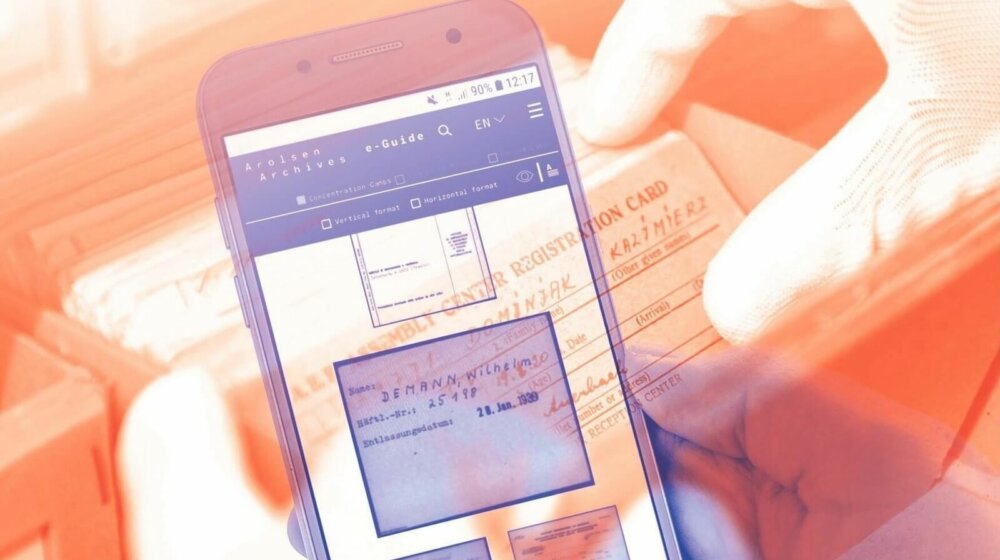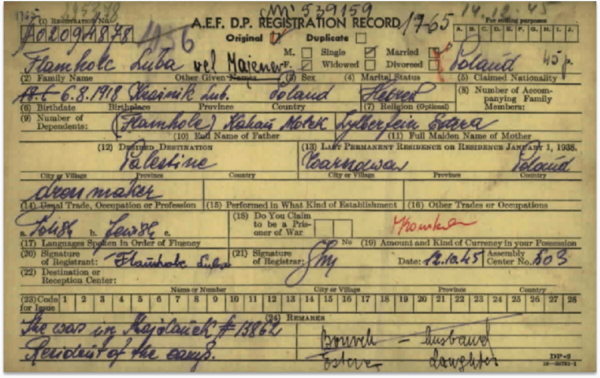The Arolsen Archives Online Tool: New Information on the Survivors of Nazi Persecution

As the online archive of the Arolsen Archives grows, so does the need to provide explanatory information on the documents it contains. The e-Guide, an online tool that uses interactive elements to describe documents in a way that is easy to understand, does exactly that. The first part of the e-Guide supplied information on concentration camp documents. The second part, which is now online, focuses on documents about people who were looked after by the Allies as survivors of Nazi persecution during the period after 1945.
After the war, the Allies and a large number of aid organizations took care of the survivors of the concentration camps, the liberated forced laborers, and all those defined as Displaced Persons (DPs) at the time. The latest part of the e-Guide focuses on the documents created in this context, which contain information about many millions of people. This is a little-known chapter in the history of the post-war period. The e-Guide uses selected documents to explain how these people managed to make new lives for themselves and what support they received.
What did those who were liberated need in the period that followed 1945?
Shoes, hats, pajamas and towels – when the war ended, many DPs were even in need of basic clothing and everyday objects. Allied relief organizations, such as the United Nations Relief and Rehabilitation Administration (UNRRA), distributed the various items that the DPs needed and used numerical codes to record this on their registration cards. The new part of the e-Guide deciphers these numerical codes and other abbreviations. Another fascinating aspect is that the documents explained in the e-Guide make it possible to trace the paths taken by DPs, starting from the place where they first received support and continuing on through to their emigration. This opens up a whole new perspective on DPs’ lives – both for academic researchers and for family members.
Most of the documents that have now been added to the e-Guide come from the so-called post-war card file, due to be published in the online archive of the Arolsen Archives in early 2020. All the personal data within this card file will then be available online, but that is not all – the e-Guide is a sophisticated tool which provides additional explanatory information on the contents of the card file, which contains about 3.5 million documents.

The second part of the e-Guide explains documents like this so-called DP 2 card, which was used by the Allies to register displaced persons.
In order to produce the e-Guide, which is available in English and German, the Arolsen Archives carried out extensive research into the documents, collated the results of international research, and combined these results with in-house knowledge about the documents. The result is an online tool that invites people to explore the documents and provides both the interested public and expert users with a wealth of useful information that is presented in a clear form. The third and final part of the e-Guide will focus on the documents on Eastern and Western European forced laborers and will be rolled out at the end of 2020.

